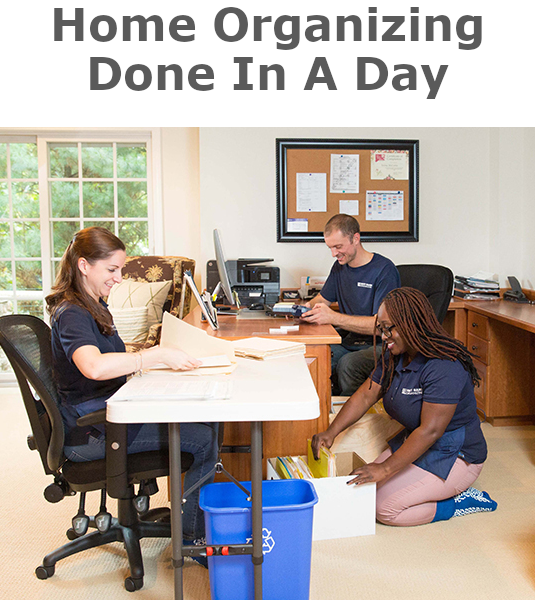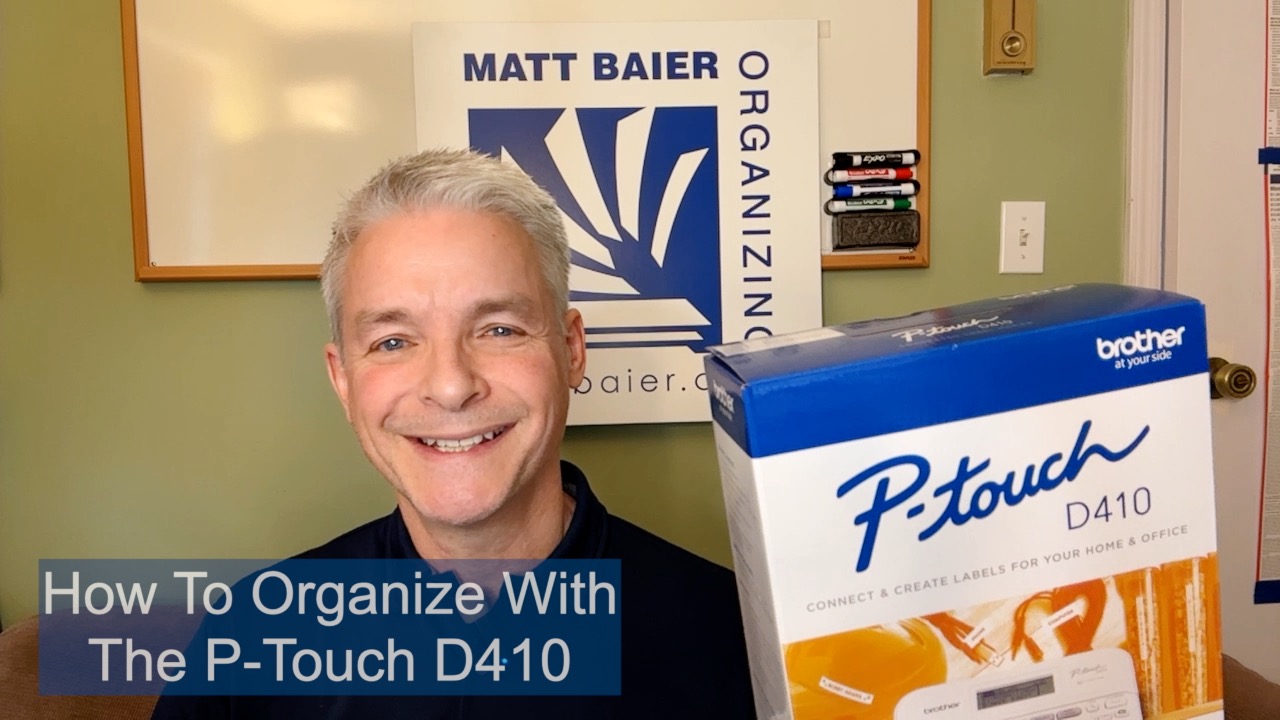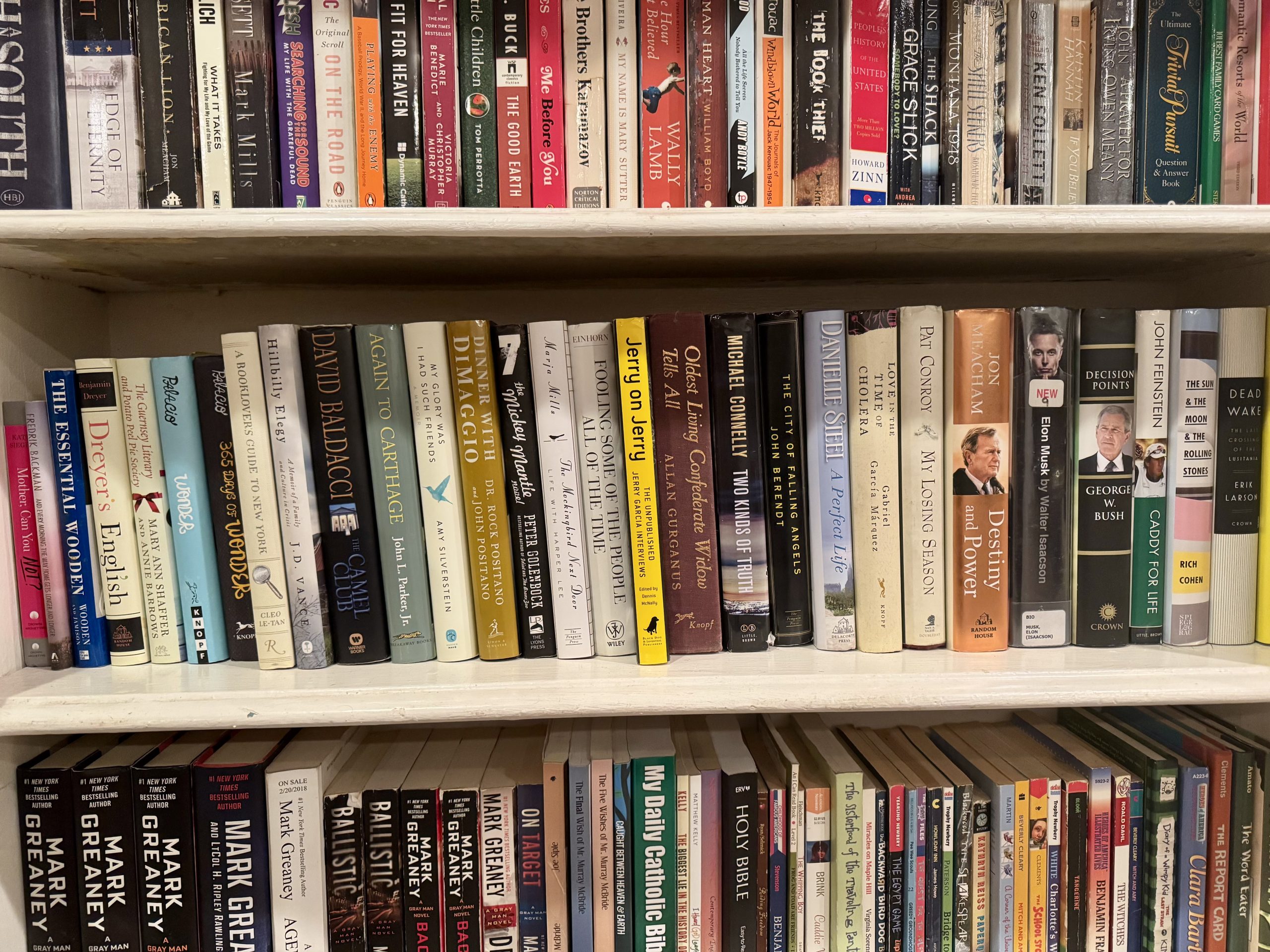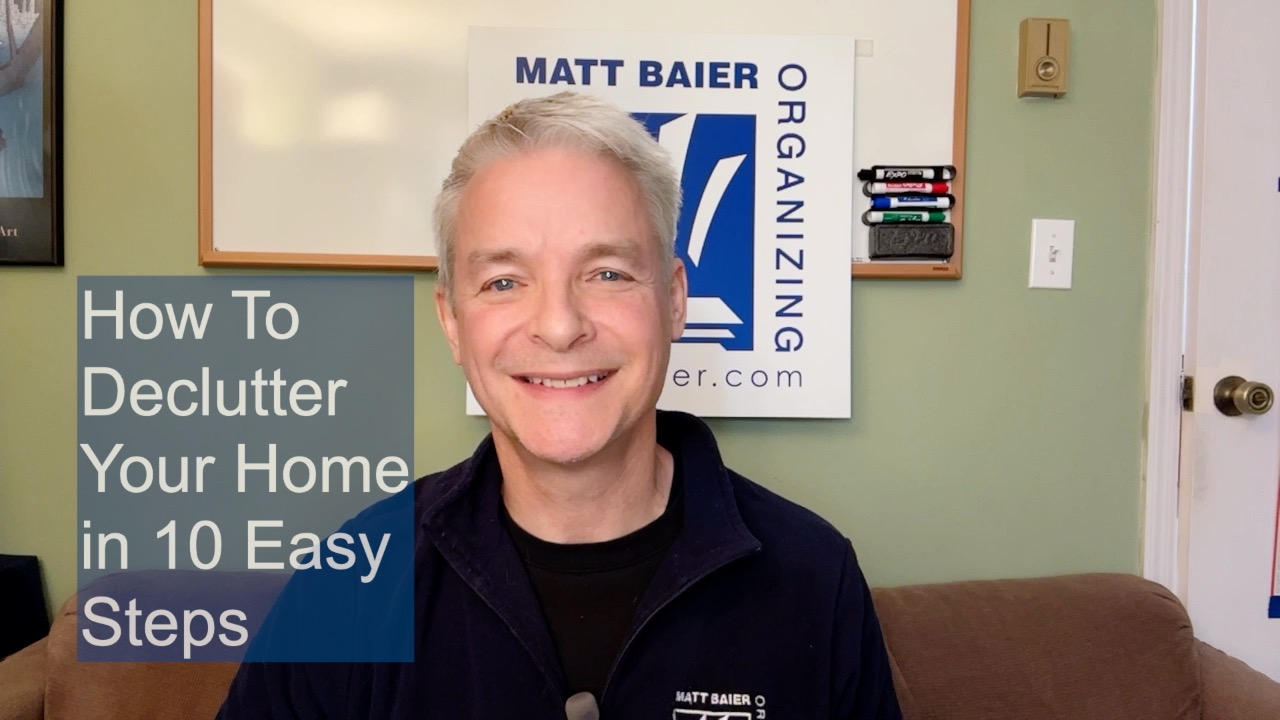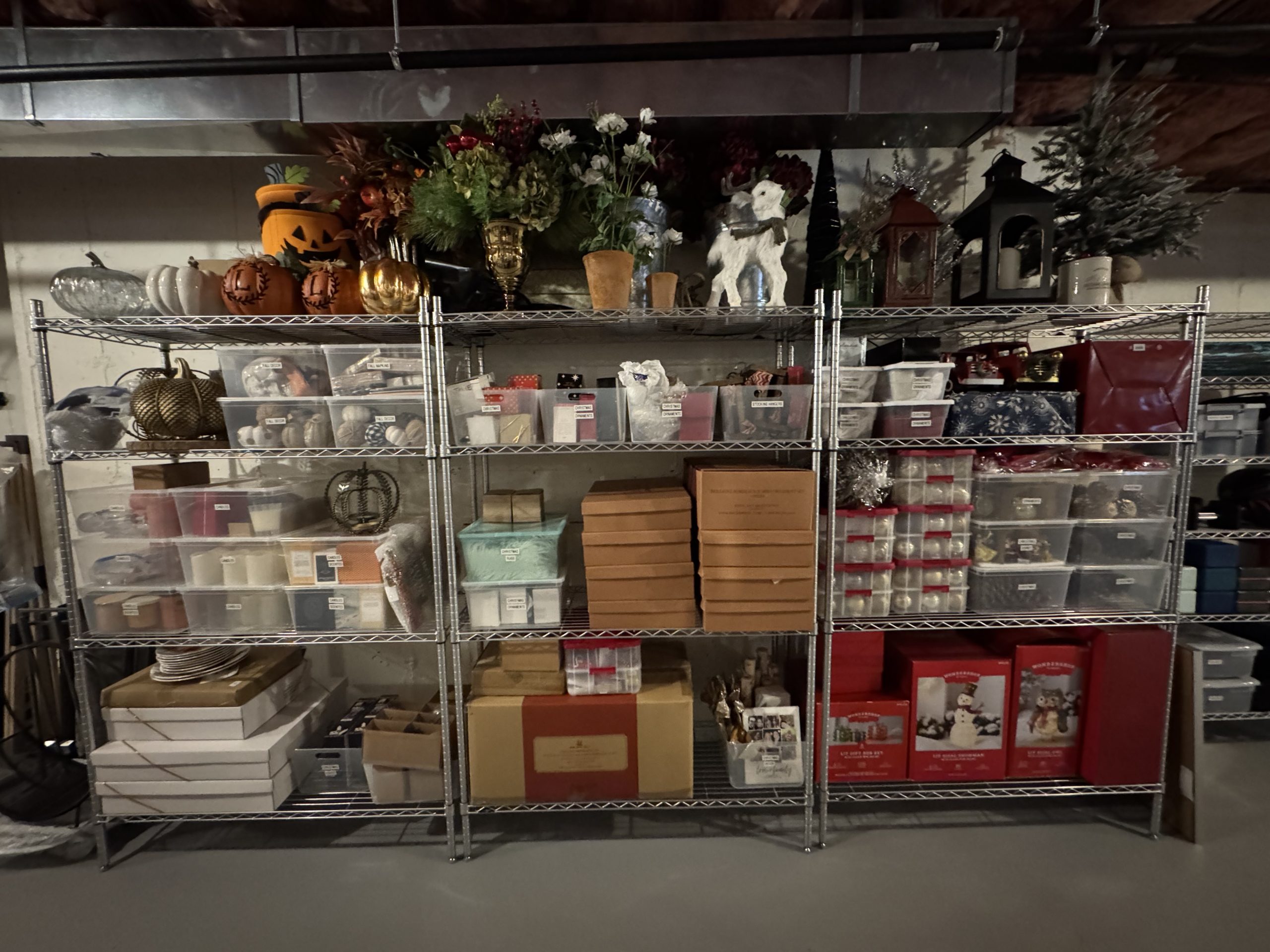For those of you who prefer to read, here is a transcription of my video with this title.
I’ve had several requests for the subject of how to purge paper piles and where to begin? I could just refer you to other posts I’ve written on paper organizing, but instead here are 8 easy steps.
Step 1: Do Paper Last
First, declutter paper LAST. I know. Paper is the big category and you’re finally ready to get to it, but trust me, do it last. To properly process paper you need a lot of surface area. More than you think. So grab some banker boxes and simply clear off your surfaces, by separating loose paper from everything else. Break the non-paper into general categories Then, use the surface you have cleared to spread out and prioritize those non-paper categories.
Discard and donate what you can and find a better home for the keepers. When you have the non-paper out of the way first, you have created two things:
- A singular focus on paper
- Clear work surfaces for processing.
Step 2: Discriminate
Of course, it is wrong to discriminate with people, but paper doesn’t demand fairness. If you are looking at piles of paper, there’s no way they all demand equal attention. I have addressed 4 essential stages of paper in past videos, which you should watch for clarification, but here’s the essentials:
- Running files are the action files that you want to make a point of acting on. They should be in your field of vision
- Sitting files are files you need to be able to find reliably, in a drawer near desk.
- Sleeping files, the big one, are files you’re keeping just in case. Remote need merits remote location
- Dead files have lost all value. Shred and recycle.
Step 3: Provide a surface
What’s the best way to sort these 4 stages? Give yourself a clear work surface. It’s your number one organizing tool, because it allows you to spread out, prioritize, and process. Don’t try to skip this step. It’s essential.
Step 4: Forget OHIO
You ever hear the organizing advice to only handle it once?” Well forget it! Why? Because you’ve got a LOT of paper and you need to work FAST. Also, you must discriminate paper. Remember. It’s not all created the same. The OHIO method would have you read, act, file or toss each page before moving on to the next. To move fast, you need to limit yourself to the singular action of JUST sorting. Do it FAST. Momentum makes magic.
Step 5: Set a Timer
To make sure you are moving fast AND to ensure you are focused, a timer is a good reminder. I am using the Time Timer from timetimer.com. See exactly what 25 minutes looks like and just focus on sorting FAST. Your first goal is to sort by stage and return to a clear surface.
Step 6: Preserve Progress
Remember, reducing large quantities of paper by sorting is your current goal, so don’t get distracted by filing systems yet. My favorite way to keep things sorted/sub-sorted temporarily is with banker boxes for stages and Zip-loc bags for categories.
You may not be able to reduce all your paper in one sitting. You don’t want loose, unidentified piles, which may get mixed up, leaving you confused and discouraged from resuming the sort. These simple tools will preserve your progress. When you return to sorting, you will be able to see exactly where you left off. This allows you to instantly resume. Write on the backside of the Post-it and stick it inside the Ziploc, so that it doesn’t accidentally fall off.
Step 7: Delegate
You may feel that making decisions on sorting your files requires your unique knowledge, but you know what doesn’t? Shredding! Perhaps you’re tempted to stop and shred, but avoid that distraction. You can delegate shredding or hire a service. Also, once you have identified all the files from previous years you are keeping, you could delegate that too. A friend or family member only has to find the years and sort by year. Those then become boxes of sleeping files that you can store more remotely. This frees up lots of space. Your focus on prioritizing is more valuable, because you can’t delegate that.
Step 8: Learn, Don’t Return
So you’ve discarded dead files, stored sleeping files, and categorized the sitting and running files. You’ve opened up space in your home office, but how do you keep the paper clutter from returning? Find the answer in my Youtube videos: Organizing Paper Files Made Easy and Organizing Paper Action Files Made Easy.
How many piles of paper do YOU have? Want to give these 8 simple steps a try?
Please Share With Your Community






